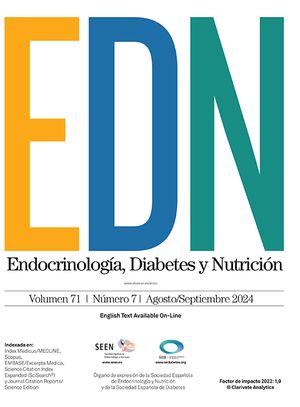La hiponatremia es la alteración hidroelectrolítica más común en los pacientes con cirrosis. La hiponatremia puede ser consecuencia de una pérdida importante de líquido extracelular, “hiponatremia vera o hipovolémica”, o presentarse en el contexto de un aumento del volumen de líquido extracelular y en ausencia de pérdidas importantes de sodio, situación que ocurre en los pacientes con cirrosis avanzada, “hiponatremia dilucional o hipervolémica”. En la hiponatremia dilucional o hipervolémica la concentración sérica de sodio está disminuida, el volumen plasmático aumentado (aunque el volumen plasmático efectivo está disminuido debido a una marcada vasodilatación arterial en la circulación esplácnica) y el volumen de líquido extracelular aumentado, con ascitis y edemas en ausencia de signos de deshidratación. Esto es consecuencia del deterioro marcado en la excreción renal de agua libre de solutos, que condiciona una retención renal de agua desproporcionada con relación a la retención de sodio. La hiponatremia vera representa un 10% de todas las hiponatremias que presentan los pacientes con cirrosis; por tanto, y debido a que la hiponatremia hipervolémica es por mucho la más frecuente, este capítulo se dedica específicamente a la hiponatremia hipervolémica en la cirrosis.
Hyponatremia is the most common electrolyte disorder in patients with cirrhosis. This disorder can be a result of substantial loss of extracellular fluid “hypotonic or hypovolemic hyponatremia” or develop in the context of an increase in extracellular fluid volume and in the absence of major sodium losses; this situation occurs in patients with advanced cirrhosis and is known as “dilutional or hypervolemic hyponatremia”. In dilutional or hypervolemic hyponatremia, serum sodium concentration is reduced, plasma volume is increased (although the effective plasma volume is decreased due to marked arterial vasodilation in the splanchnic circulation) and extracellular fluid volume is increased, with ascites and edema in the absence of signs of dehydration. This is a result of the marked deterioration in renal excretion of solute-free water, leading to disproportionate water retention in relation to sodium retention. Hypotonic hyponatremia represents 10% of all hyponatremias in patients with cirrhosis. Since hypervolemic hyponatremia is by far the most frequent form of this disorder, the present chapter will concentrate specifically on hypervolemic hyponatremia in cirrhosis.




